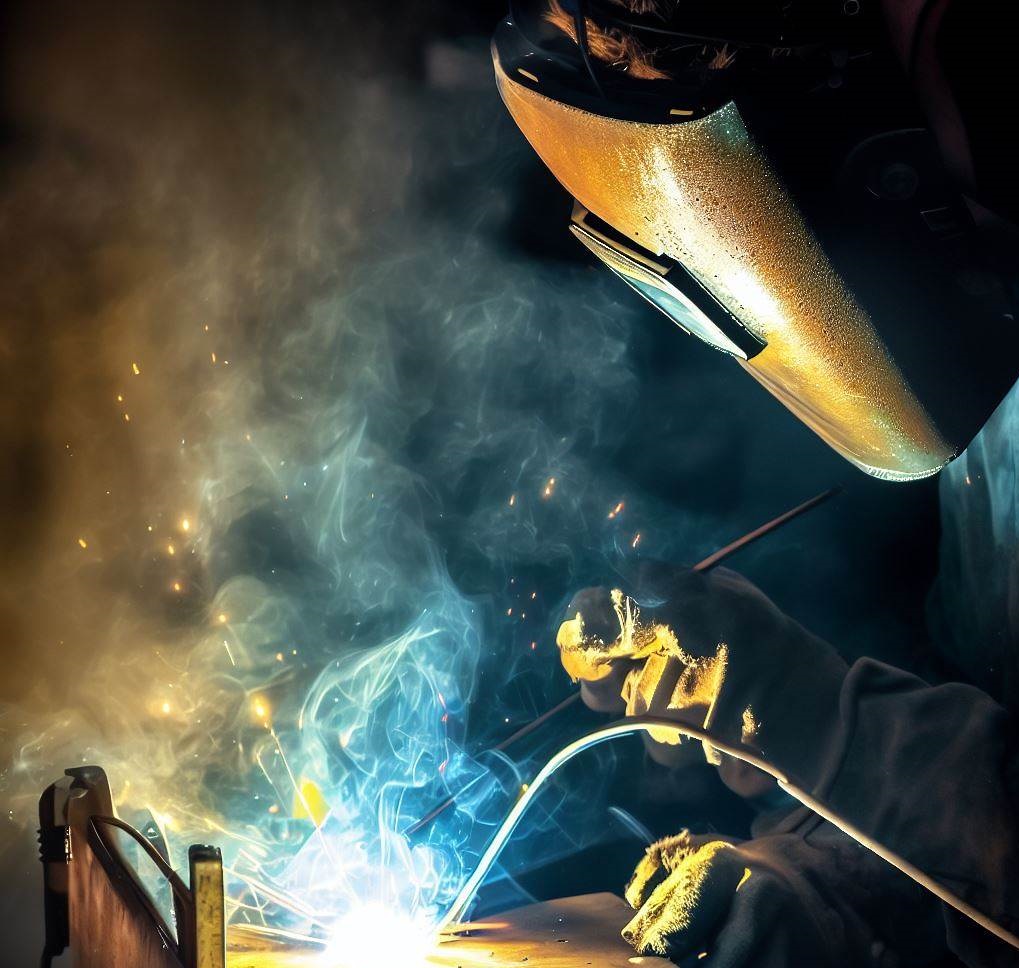Introduction
The welding industry has a rich history that dates back centuries. Welding is the process of joining two metals by heating them to a molten state and then allowing them to cool and solidify, creating a permanent bond. The welding industry has undergone a significant evolution over time, from primitive techniques to highly advanced and automated processes. Today, welding is an essential component of the fabrication industry, supporting various sectors such as construction, automotive, aerospace, and many more. In this article, we’ll explore the history of welding, its financial impact, and its importance to the fabrication industry.

History of Welding
Welding has been in use since ancient times, with evidence of welded gold ornaments found in the Middle East dating back to the Bronze Age. However, it wasn’t until the 19th century that welding as a practical technique was developed. In 1802, Sir Humphry Davy discovered that electricity could create an arc between two carbon electrodes, which could be used to melt metals. This discovery led to the development of the carbon arc welding process, which was used extensively in the 19th and early 20th centuries.
The next major breakthrough in welding came in the early 1900s when oxyacetylene welding was invented. This technique used a combination of oxygen and acetylene gas to create a high-temperature flame, allowing for the welding of thicker metals than was possible with carbon arc welding. In the following decades, new welding techniques were developed, including gas metal arc welding (GMAW), gas tungsten arc welding (GTAW), and flux-cored arc welding (FCAW), which became popular during the 1940s and 1950s.
Current State of Welding Industry Today, the welding industry is a significant contributor to the global economy. According to a report by MarketsandMarkets, the welding equipment market was valued at $12.4 billion in 2019 and is expected to reach $15.9 billion by 2024, growing at a CAGR of 4.8% during the forecast period. The report cites the growing demand for welding automation, rising manufacturing activities, and the increasing adoption of welding in the automotive and construction industries as factors driving market growth.
However, the welding industry faces several challenges, including the shortage of skilled welders, the need for continuous training to keep up with technological advancements, and environmental concerns. Welding produces harmful fumes and gases that can be hazardous to the welder and the environment. Therefore, proper ventilation and the use of personal protective equipment (PPE) are essential to ensure the safety of welders and minimize the environmental impact.

Importance of Welding to the Fabrication Industry
The fabrication industry relies heavily on welding to join different parts and components to create a final product. Welding is used in various sectors, including construction, automotive, aerospace, shipbuilding, and many others. For example, the construction industry uses welding to join structural steel beams and reinforce concrete structures. The automotive industry uses welding to join various components, such as the chassis, body, and exhaust system. Aerospace companies use welding to join metal components in aircraft structures and engines. Welding is also used in the shipbuilding industry to join steel plates and create hulls and other structures.
The importance of welding to the fabrication industry can’t be overstated. Without welding, many of the products we use in our daily lives wouldn’t be possible. Welding allows manufacturers to create products that are stronger, more durable, and more reliable than those created using other joining techniques. It also allows for the creation of complex shapes and designs that would be impossible to achieve with other methods.

Financial Impact of Welding
The financial impact of welding can be seen across various industries. For example, the construction industry relies heavily on welding to create strong and durable structures. According to a report by the American Welding Society, the construction industry accounts for 31% of all welding jobs in the United States. The report also notes that the demand for welding in construction is expected to grow as the need for new infrastructure and building maintenance increases.
In the automotive industry, welding is used extensively in the manufacturing process. According to the International Institute of Welding, the global automotive industry accounts for approximately 25% of all welding applications. The use of welding in automotive manufacturing allows for the creation of lightweight and fuel-efficient vehicles that meet safety and environmental standards.
In the aerospace industry, welding is used to create components for aircraft, spacecraft, and satellites. According to a report by Research and Markets, the aerospace welding market is expected to grow at a CAGR of 3.68% during the period 2020-2025. The report cites the increasing demand for lightweight and fuel-efficient aircraft and the growing use of automation in aerospace manufacturing as factors driving market growth.
Conclusion
In conclusion, the welding industry has come a long way since its early days. From simple techniques to highly advanced and automated processes, welding has evolved into an essential component of the fabrication industry. The financial impact of welding can be seen across various industries, from construction to aerospace. Welding allows for the creation of strong, durable, and reliable products that meet safety and environmental standards. However, the welding industry also faces challenges, including the shortage of skilled welders and the need for continuous training and proper safety measures. It’s essential to recognize the importance of welding and support its growth and development to ensure its continued success in the future.
